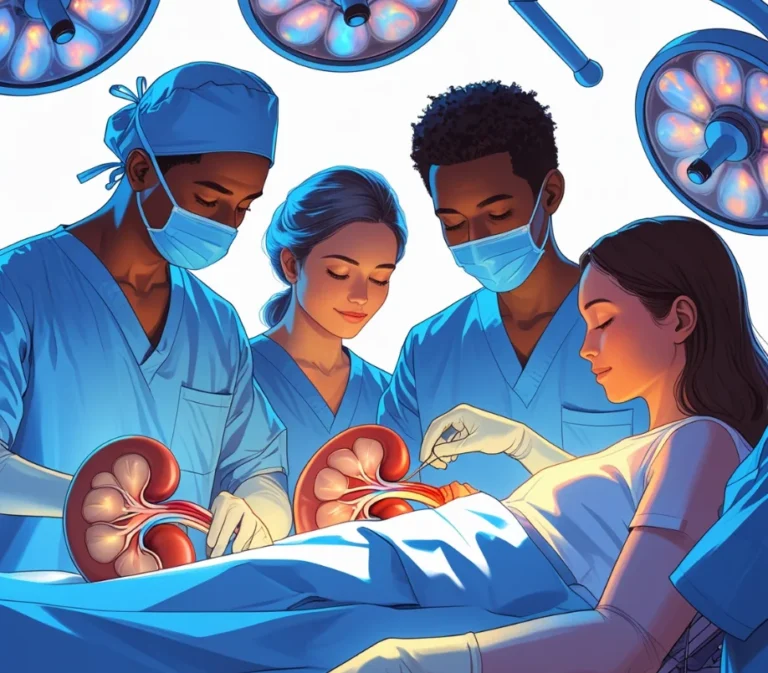Cyst: Causes, Symptoms, and Effective Treatments
Cyst: Causes, Symptoms, and Effective Treatments. A cyst is an abnormal pocket of fluid, like a blister, that can form in many different areas of the body including the skin, genitals and internal organs. A cyst can vary in size from a tiny sac right up to a heavy bag containing litres of fluid. The common symptom is swelling around the area, but a cyst may or may not be painful. Sometimes, depending on the cause and location, a cyst contains semi-solid or solid material.
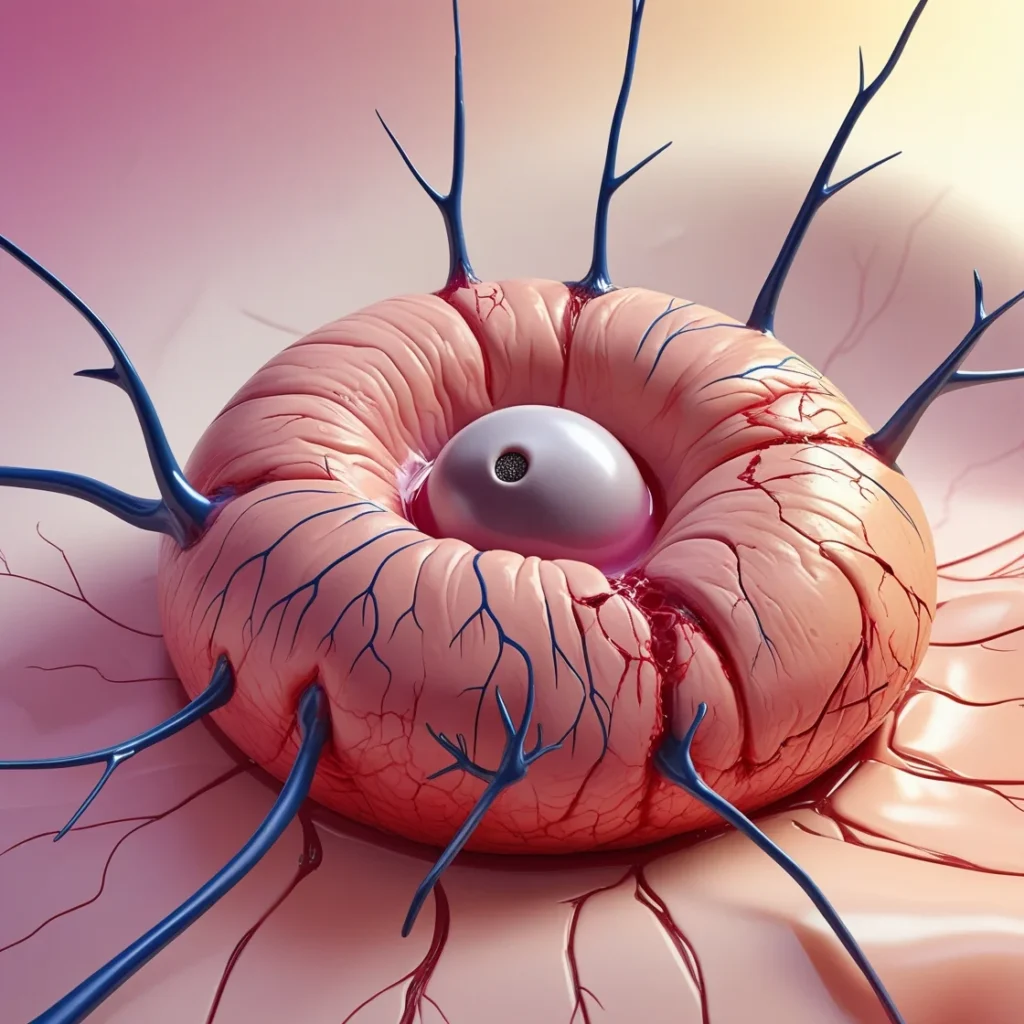
The typical treatment for any cyst is removal by surgery and a routine test for cancer, even though most cysts are benign. All unusual lumps need to be investigated by a qualified health professional.
What Are Types of Cysts?
Cyst: Causes, Symptoms, and Effective Treatments. A cyst is a pocket-like area, within tissue, that is not normally there. It can be filled with fluid, blood, tissue, hair, bone, a foreign body, etc. If it is filled with pus, it becomes an abscess.
Cysts can occur anywhere on or in your body. Cysts that are often treated in outpatient clinics are “on” your body. That means they are bumps and lumps you find on the outside of your body, just under the skin. You will see them when you look in the mirror, or feel them when you touch them with clothing or when you sit or lean on something that presses on that spot. Fortunately, many of these are not serious, and some even go away without surgery.
Below are some of the cysts common in children. Most are diagnosed based on the look and feel of the cyst. Sometimes other tests are needed to make a diagnosis.
Dermoid Cyst
A non-cancerous sac that you have at birth but may not see as a bump until later in life.
Signs and Symptoms
Painless bump; often shows up on your face near your eyebrows, on your scalp, on your chest, or over your collarbone; it may contain fluid, pus, a foreign body or other type of body tissue.
Treatment
Surgery to remove the cyst because it will not go away on its own.
Ganglion Cyst
Swelling or bump that is on top of a joint or tendon; you usually find it on your hand but may also find it on your knees or feet.
Signs and Symptoms
Small bump ¼ to 1¼ inches; you find it on your hands, knees, or feet; it comes and goes; most are painful; pain is worse with movement.
Treatment
May disappear on its own, or your doctor may want to treat it by:
- Fluid aspiration (the doctor uses a needle and syringe to pull some fluid from the cyst)
- Surgery to remove the cyst while you are asleep
Lipoma
Soft tissue mass that feels soft and rubbery; slow growing; harmless.
Signs and Symptoms
You can find a lipoma alone or in groups; it is usually less than 2 inches in size; you can find it on your shoulders, neck, stomach, chest, back or other places.
Treatment
You may not need any treatment.
Your doctor may want you to have surgery if:
- Your lipoma is growing quickly.
- It is getting very painful.
- The way it looks really bothers you.
- It is pressing on a nerve and causing numbness or changes in feelings around the site.
Pilomatrixoma
Calcified cyst that you may find on your head, neck, arms or legs; non-cancerous lesion.
Sign and Symptoms
Small, hard bump under the skin; 1¼ inches or less in size usually on your face, head, neck or arms; painless.
Treatment
Your doctor will probably recommend surgery to remove; pilomatrixomas usually do not regrow after surgery.
Pyogenic Granuloma
Small, red, raised non-cancerous bump or series of bumps on your hands, arms or face; often where you may have had an injury.
Signs and Symptoms
Bumps; you may have some bleeding.
Treatment
May go away without treatment or you may need surgery; some can be treated by freezing.
Sebaceous Cyst
Also called epidermoid or pilar cyst; slow growing; painless; thought to come from a blocked hair follicle; you can find it on your face, neck, chest, stomach or back.
Signs and Symptoms
Round bump on face, neck, chest, stomach or back; yours may be as little as less than 1/16 of an inch or as large as 4 inches in size; varies from painless to very reddened and painful; can have drainage that is a cheesy-like, stinky fluid.
Treatments
If you have pain and swelling, try warm, moist compresses for relief; if your cyst does not go away on its own, your doctor will probably recommend surgery.
NOTED:
Here are some common treatment options for cysts:
- Observation – Small, painless cysts may not require treatment and can be monitored over time.
- Drainage – A healthcare provider may drain the cyst using a needle to remove fluid.
- Medications – Antibiotics or steroid injections can help treat infected or inflamed cysts.
- Surgical Removal – Larger or recurrent cysts may need to be surgically removed to prevent recurrence.
- Home Care – Warm compresses can help reduce swelling and encourage drainage in some cases.
Causes of cysts
Most cysts form for no apparent reason. Some of the known causes of cysts include:
- Blocked ducts, which cause a build-up of fluid
- A defect in the cells
- An impact injury that pops a blood vessel
- A parasite.
Different cysts and treatment
Some of the different types of cysts include:
- Arachnoid cyst – the arachnoid membrane covers the brain. A baby may be born with an arachnoid cyst. It is caused by the arachnoid membrane doubling up or splitting to form an abnormal pocket of cerebrospinal fluid. This can be treated by surgical drainage if necessary.
- Bartholin’s cyst – the Bartholin glands are situated inside the vagina. A cyst occurs if the ducts become blocked. Treatment includes surgery and antibiotics.
- Breast cyst – these cysts are usually painful and need to be drained with a needle. There is some evidence that breast cysts might indicate an increased risk of breast cancer.
- Cystic hygroma – occasionally, a baby is born with a small cyst or bursa. This birth defect can be corrected with surgery.
- Hydatid disease – a small tapeworm forms cysts in the liver or lungs. The tapeworm eggs are spread by contact with infected dogs, their faeces (poo) or anything contaminated with faeces such as soil. Treatment includes surgery and drugs.
- Ovarian cyst – most are benign, but can grow to such a size that the woman looks pregnant. Cysts less than 5cm are a common part of normal egg formation in the reproductive years. Sometimes, bleeding occurs into these cysts (this is called a haemorrhagic cyst). In some cases, the cysts are cancerous. Treatment includes surgery.
- Pilonidal disease – a cyst forms in the skin of the lower back, sometimes containing an ingrown hair. Pilonidal cysts can grow in clusters and sometimes create a hole or cavity in the skin. Treatment includes draining the cyst or surgical removal.
- Sebaceous cyst – the skin is lubricated by sebaceous fluid. This fluid can build up inside a pore or hair follicle and form a hard lump filled with thick, greasy matter. When squeezed, a small dome-shaped projection will appear (the punctum), representing the opening of the cyst. This may allow material to be expressed (squeezed out). Treatment includes drugs, draining the cyst with a small needle, or removal by surgery. Sebaceous cysts are common on the face, back, scalp and scrotum.
Sebaceous cyst
Sebaceous cysts are filled with sebum and are less common than epidermoid cysts. They often form within sebaceous glands, which are part of your skin and hair follicles. Sebaceous glands make oil for your skin and hair.
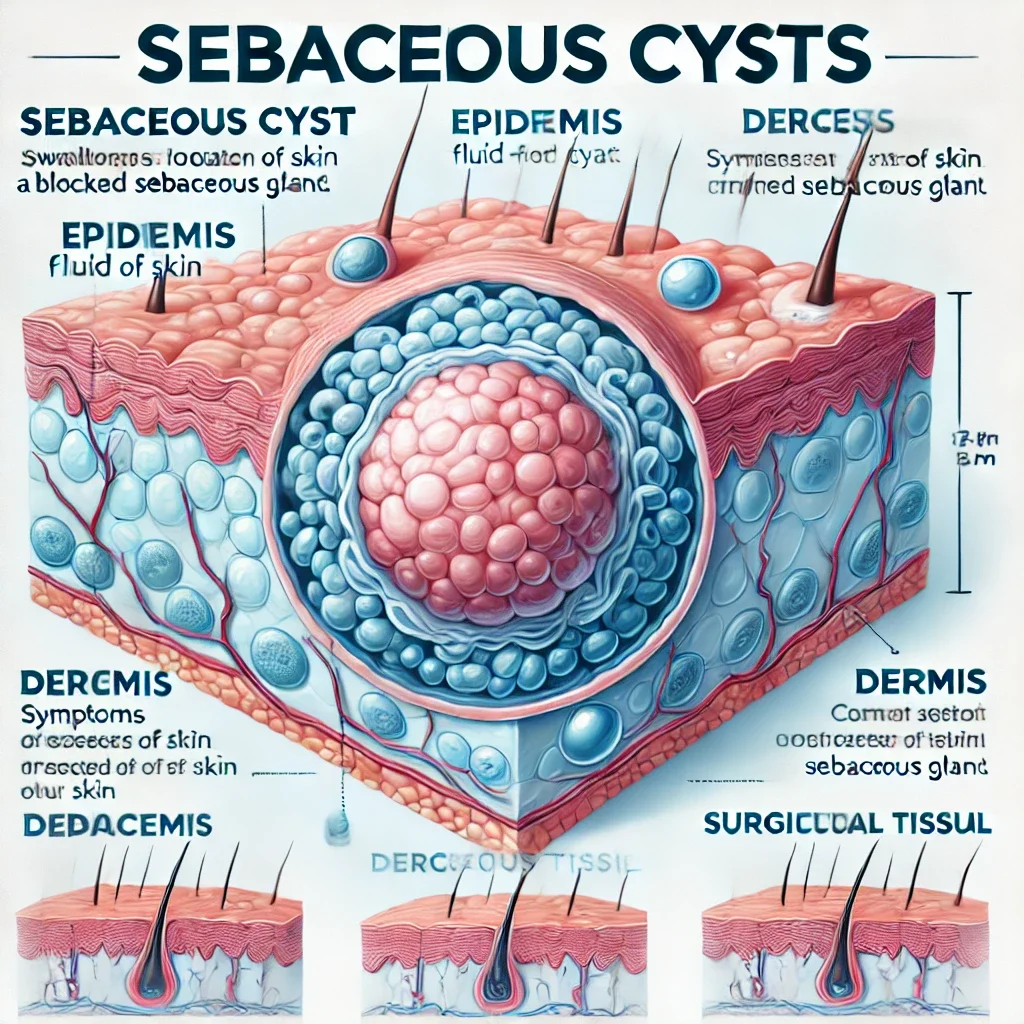
These cysts most commonly occur on your face, neck, or torso, and are often the result of damage to sebaceous glands.
Breast cyst
Benign cysts can develop when fluid collects near your breast glands. They can cause pain or tenderness in the affected area.
While breast cysts are noncancerous, there are many possible other more serious causes for a lump in your breast. It’s important to be familiar with how your breasts typically feel so you’re aware of changes. This way, you’re more likely to notice changes right away.

You should try to make an appointment to see a healthcare professional if:
- you discover a new lump
- an area of your breast is noticeably different than the rest
- a lump changes or grows larger
- you notice unexpected discharge from the nipple
- you have an inverted nipple, and it wasn’t always inverted.
Ganglion cyst
A ganglion cyst is a round, gel-filled lump of tissue that usually appears along tendons or joints, especially in the hands, wrists, ankles, and feet. Fluid accumulation can occur due to injury, trauma, or overuse, but often the cause A ganglion cyst is common, harmless, and doesn’t cause pain or difficulties unless it grows and puts pressure on other structures.
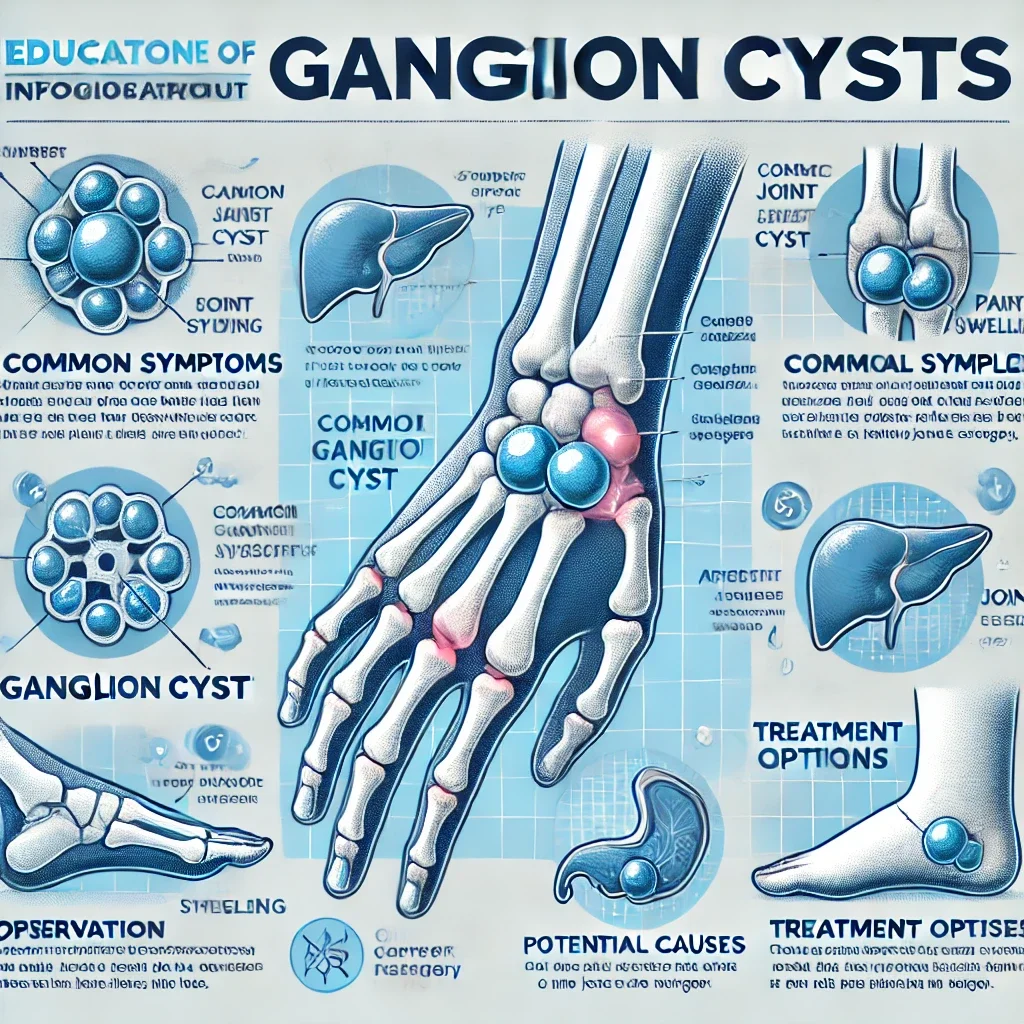
Pilonidal cyst
A pilonidal cyst is a common skin condition that forms in the cleft at the top of your buttocks. It consists of a small hole or tunnel in the skin that may become infected and fill with fluid or pus and it typically occurs after puberty.
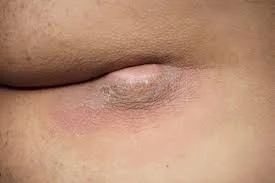
Changing hormones, hair growth, and friction from clothes or from spending a long time sitting may all cause a pilonidal cyst.
Symptoms of an infection include:
- pain when sitting or standing
- discolored or sore skin around the area
- pus or blood draining from the abscess, causing a foul odor
- swelling of the cyst
- hair protruding from the lesion
Ovarian cyst
Ovarian cysts often form when the follicle that normally releases an egg doesn’t open. This causes fluid to build up and form a cyst.
Another common type of ovarian cyst occurs after the follicle releases the egg and improperly recloses and collects fluid.
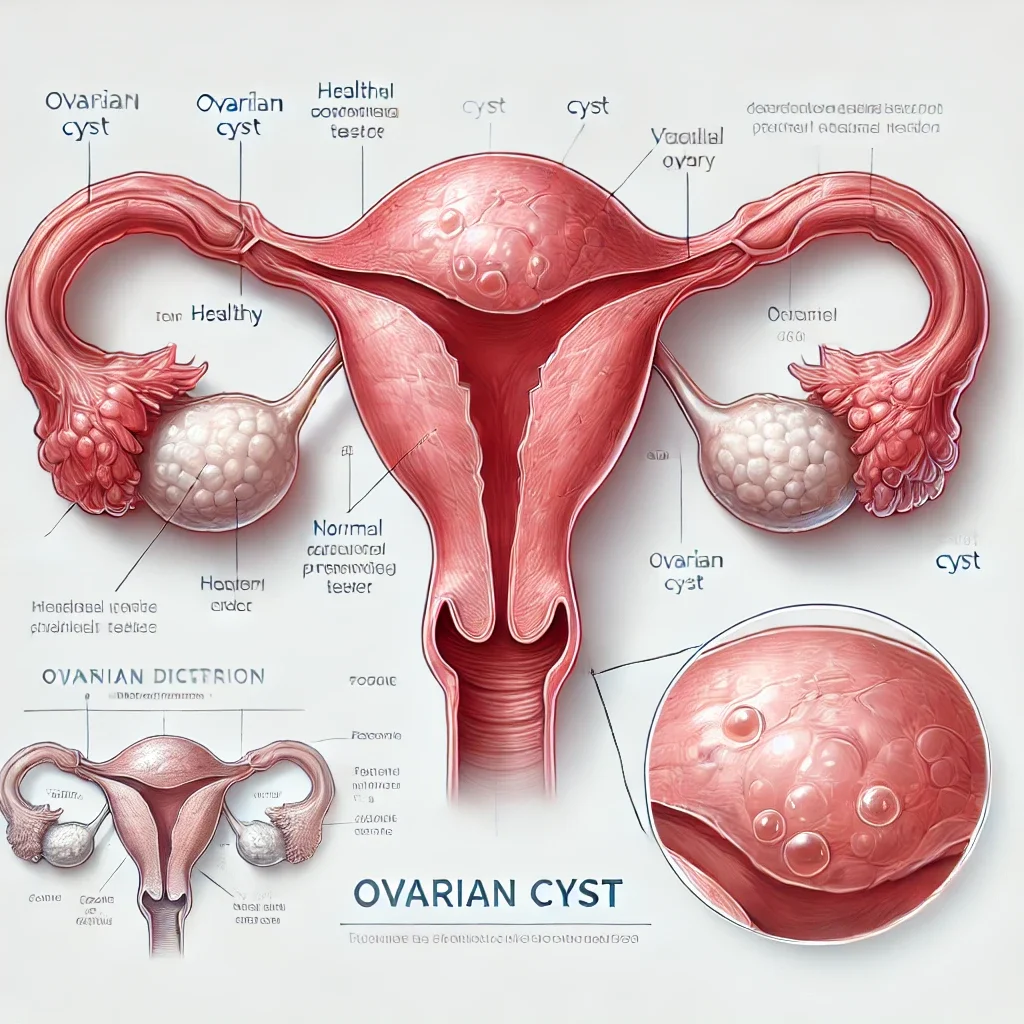
Ovarian cysts occur most often in those of menstrual age and are typically first found during pelvic exams.Ovarian cysts are associated with an increased risk of cancer when they occur after menopause.
Pilar cyst
A pilar cyst is a noncancerous, skin-colored, round bump that develops under the surface of your skin. They usually affect the skin on the scalp and results from protein buildup in a hair follicle.
They’re not cancerous, but they can grow to a size that can be uncomfortable.
Chalazion
A chalazion is a small, usually painless lump on your eyelids that occurs when the duct of the meibomian gland, an oil gland, is blocked.
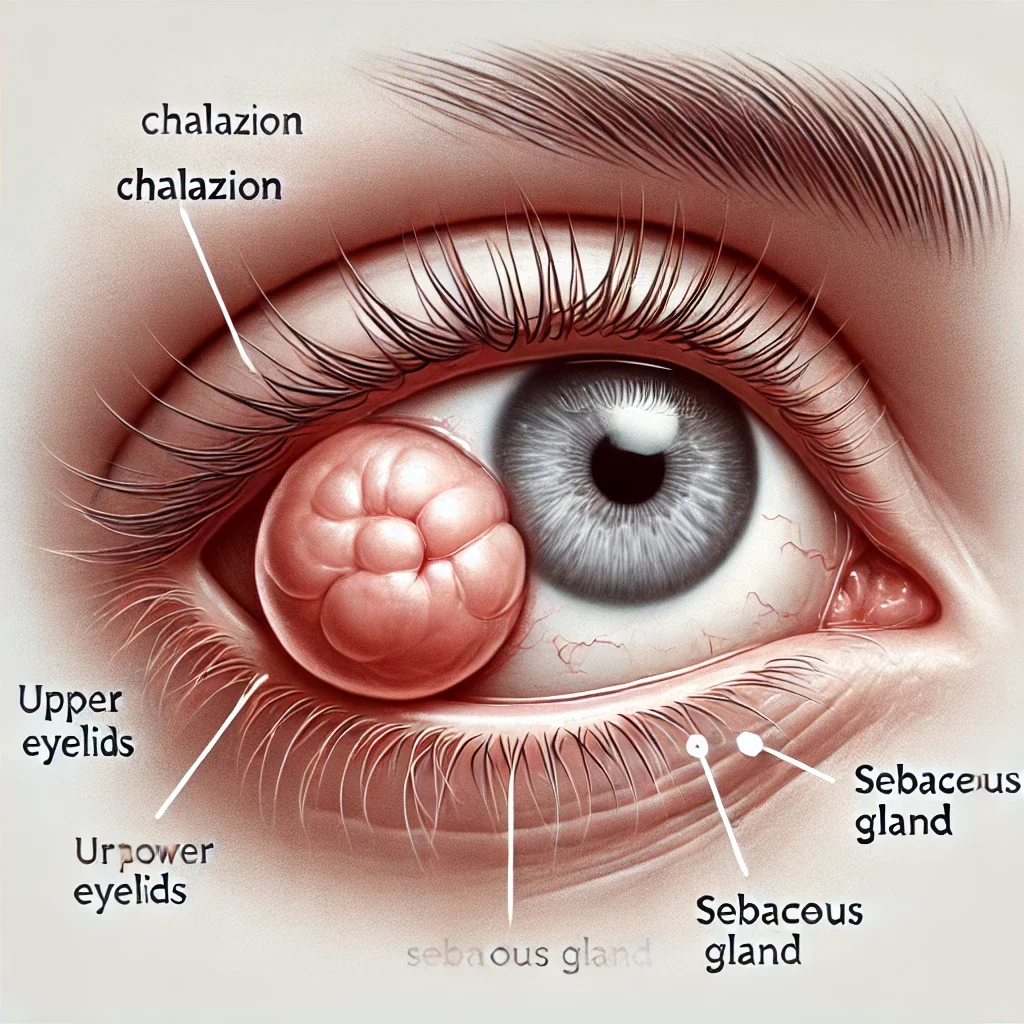
These pseudocysts can cause tenderness, blurred vision, and painful swelling. If they get too big, they can cause vision difficulties.
Cystic acne
Cystic acne results from a combination of bacteria, oil, and dead skin clogging the pores. It’s the most severe type of acne, but it usually improves with age.

Cystic acne can look like large, pus-filled boils on the skin. It can also be painful to touch. If these boils rupture, they can cause scarring.
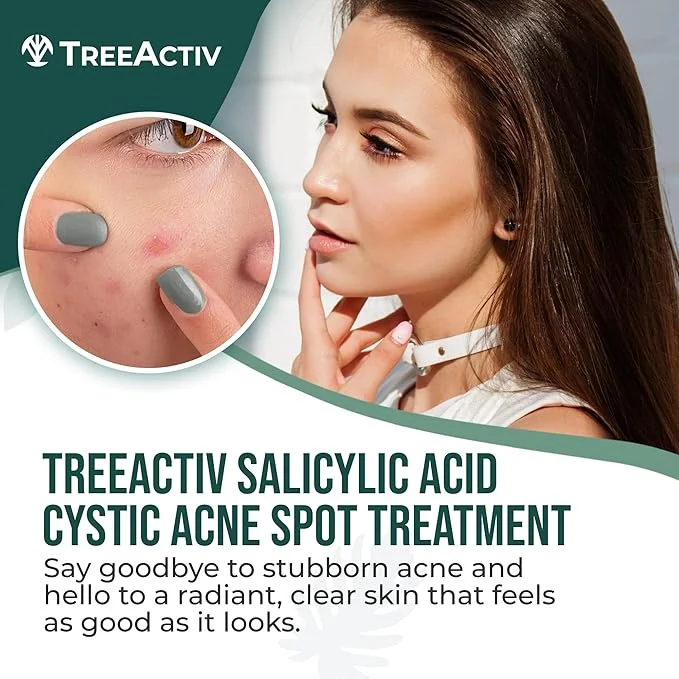
Cystic acne most commonly occurs on your face, chest, neck, back, and arms.
If you believe you may have cystic acne, a dermatologist can prescribe medications to help treat it.





